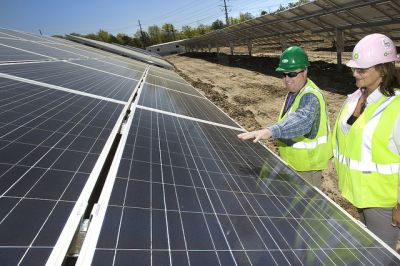Long Island Power Authority approves feed-in-tariff
 The Long Island Power Authority recently approved New York’s first feed-in-tariff program for solar energy.
The Long Island Power Authority recently approved New York’s first feed-in-tariff program for solar energy.
The utility announced that, starting July 16, it will accept applications from property owners who want to install solar arrays and will ultimately pay 22-cents per kilowatt hour on a 20-year contract for up to 50 megawatts of solar power installed by June 30, 2014. That’s enough to power 6,500 average homes.
The program will pay out for solar photovoltaic systems between 50 kilowatts and three megawatts. Projects of that size will focus incentives on commercial solar installations and will spur more businesses to launch solar programs, said John Bernhardt, spokesman for Clean Coalition.
The Clean Coalition, which stands for Clean Local Energy Accessible Now, is based in California and helps utilities and municipalities craft solar incentives and clean energy programs that drive increased solar adoption. The municipalities and states that work with the coalition are eager to incorporate more aggressive solar programs in order to promote solar industry growth and job creation, Bernhardt said.
The Long Island program is the first of its kind in New York and one of just a dozen or so in the United States. Feed-in-tariffs, which pay more for clean energy than customers pay for power, are common in Europe and are widely believed to be responsible for the explosion of solar installations there.
Bernhardt said Clean Coalition programs are gaining traction in other cities as well. But the organization is steering clear of using the term feed-in-tariff because of the negative connotation the word tariff has in the United States.
The coalition recently helped the city of Palo Alto, Calif. develop a 4-megawatt program. That program launched in March with a lot of anticipation. The coalition also worked with the city of Los Angeles to draft its 150-megawatt program. “We’re really seeing Clean programs gain some traction,” Bernhardt said.
The Long Island project was one of the first on the East Coast. “We’re really excited about the growth and excitement we’re seeing behind these municipalities and utilities,” Bernhardt said.



